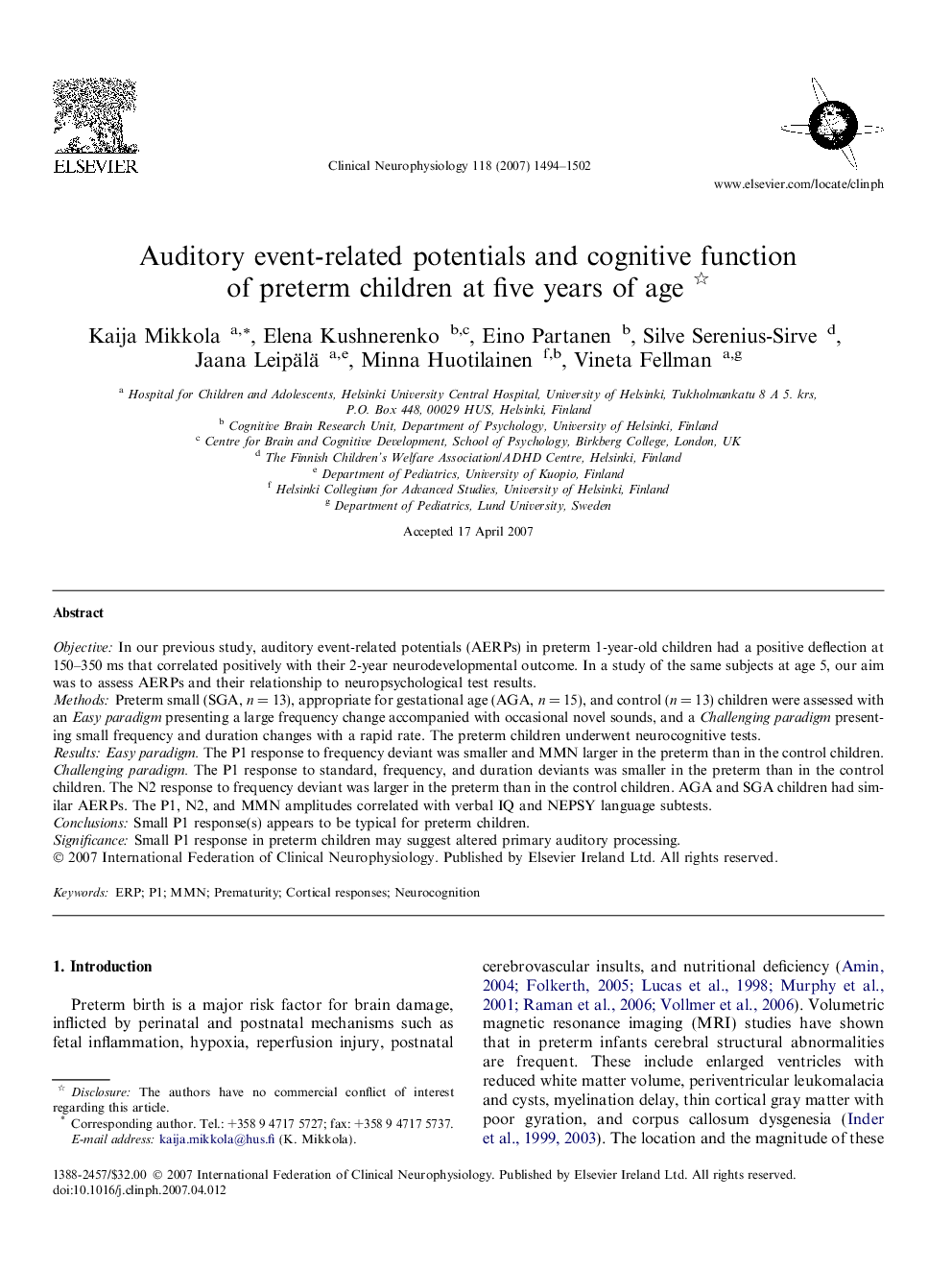| Article ID | Journal | Published Year | Pages | File Type |
|---|---|---|---|---|
| 3047623 | Clinical Neurophysiology | 2007 | 9 Pages |
ObjectiveIn our previous study, auditory event-related potentials (AERPs) in preterm 1-year-old children had a positive deflection at 150–350 ms that correlated positively with their 2-year neurodevelopmental outcome. In a study of the same subjects at age 5, our aim was to assess AERPs and their relationship to neuropsychological test results.MethodsPreterm small (SGA, n = 13), appropriate for gestational age (AGA, n = 15), and control (n = 13) children were assessed with an Easy paradigm presenting a large frequency change accompanied with occasional novel sounds, and a Challenging paradigm presenting small frequency and duration changes with a rapid rate. The preterm children underwent neurocognitive tests.ResultsEasy paradigm. The P1 response to frequency deviant was smaller and MMN larger in the preterm than in the control children. Challenging paradigm. The P1 response to standard, frequency, and duration deviants was smaller in the preterm than in the control children. The N2 response to frequency deviant was larger in the preterm than in the control children. AGA and SGA children had similar AERPs. The P1, N2, and MMN amplitudes correlated with verbal IQ and NEPSY language subtests.ConclusionsSmall P1 response(s) appears to be typical for preterm children.SignificanceSmall P1 response in preterm children may suggest altered primary auditory processing.
